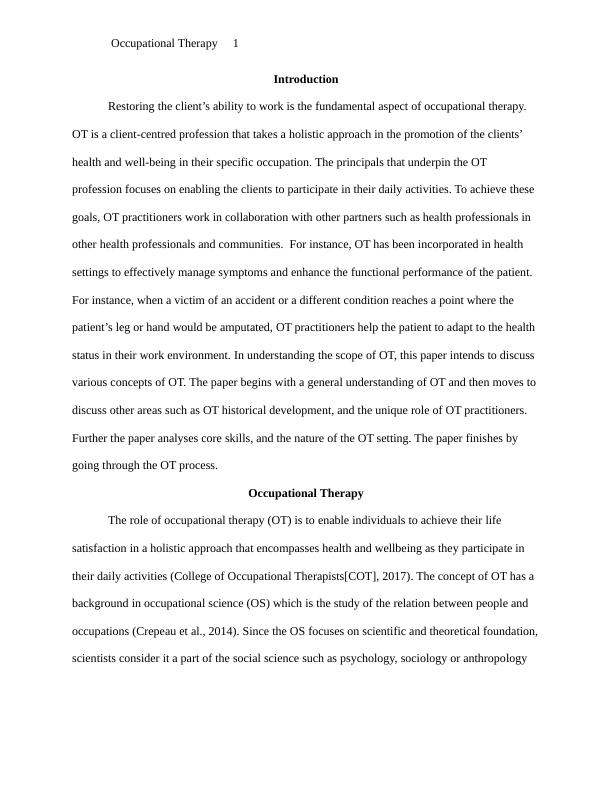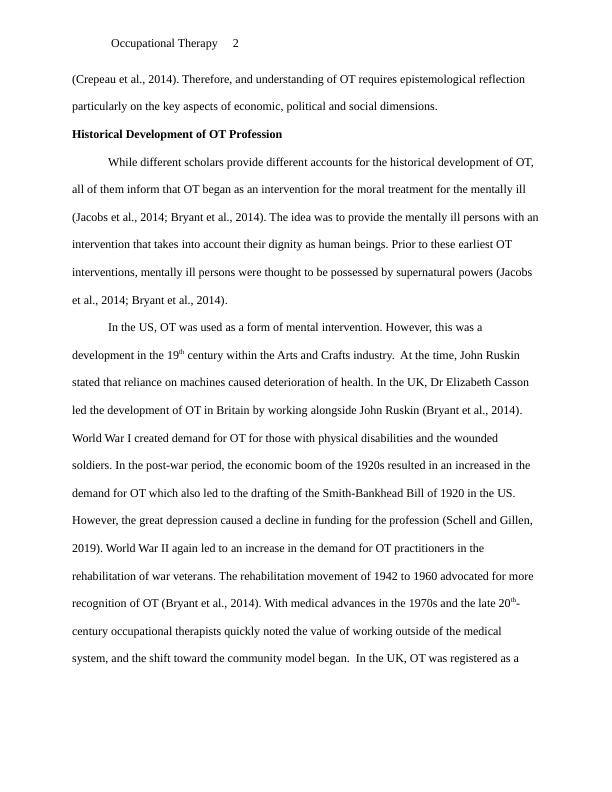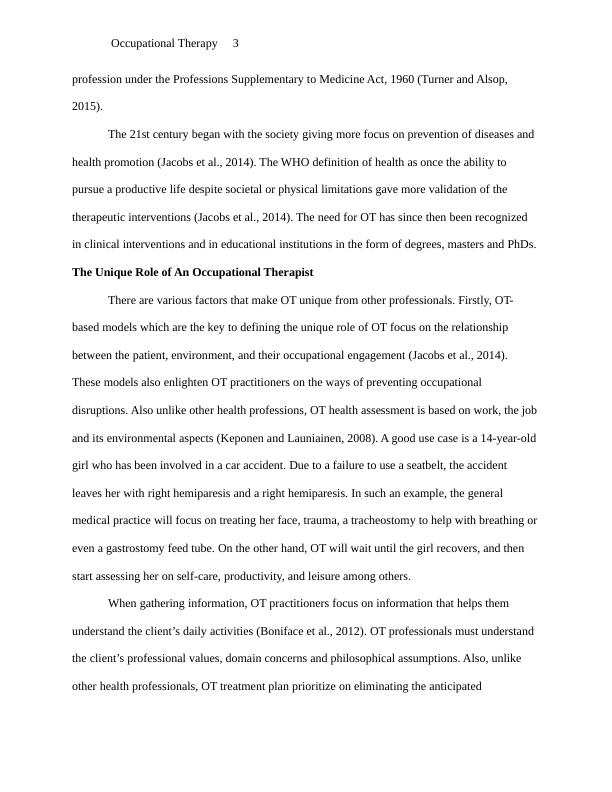Assignment On Occupational Therapy Report
Review the OT process, describe the referral, information gathering and assessment stages of the OT process, discuss the purpose, types and properties of assessments, understand the difference between standardised and non-standardised assessments, increase understanding of how a model of practice can be applied and is influential within the OT process, begin to identify client needs / problem formulation.
Added on 2022-10-04
Assignment On Occupational Therapy Report
Review the OT process, describe the referral, information gathering and assessment stages of the OT process, discuss the purpose, types and properties of assessments, understand the difference between standardised and non-standardised assessments, increase understanding of how a model of practice can be applied and is influential within the OT process, begin to identify client needs / problem formulation.
Added on 2022-10-04
End of preview
Want to access all the pages? Upload your documents or become a member.




